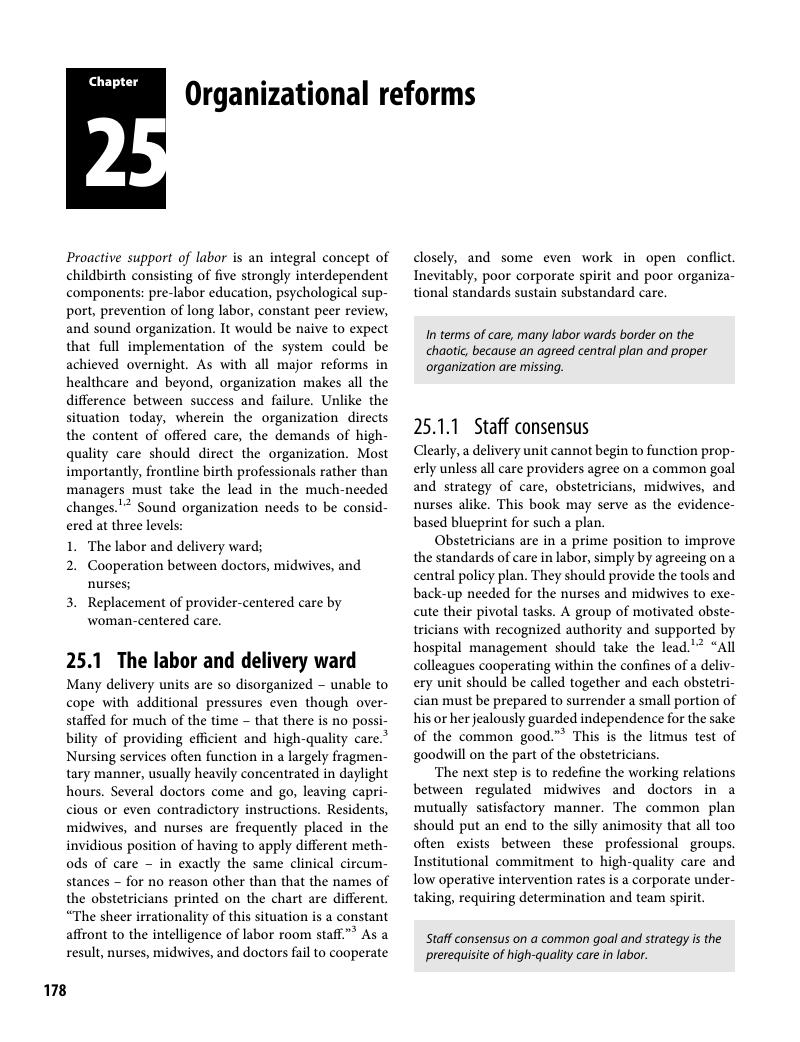Book contents
- Proactive Support of LaborThe Challenge of Normal ChildbirthSecond edition
- Proactive Support of Labor
- Copyright page
- Dedication
- Contents
- Foreword to the first edition
- Preface
- Web-links
- Chapter 1 General introduction
- Section 1 A wake-up call
- Section 2 Back to basics
- Section 3 Proactive support of labor
- Chapter 12 Leading principles
- Chapter 13 Nulliparous versus parous labor
- Chapter 14 Diagnosis of labor
- Chapter 15 Prevention of long labor
- Chapter 16 Personal attention and support
- Chapter 17 Amniotomy and oxytocin
- Chapter 18 Pre-labor preparation
- Chapter 19 Affective dimensions of labor pain
- Chapter 20 Pain relief re-examined
- Chapter 21 Dynamic dystocia unraveled
- Chapter 22 Obstructed labor
- Chapter 23 Curtailed use of induction
- Chapter 24 Safe care of the fetus
- Chapter 25 Organizational reforms
- Chapter 26 Implementation and ongoing audit cycle
- Chapter 27 External audit of procedures and outcomes
- Index
- References
Chapter 25 - Organizational reforms
from Section 3 - Proactive support of labor
Published online by Cambridge University Press: 05 September 2015
- Proactive Support of LaborThe Challenge of Normal ChildbirthSecond edition
- Proactive Support of Labor
- Copyright page
- Dedication
- Contents
- Foreword to the first edition
- Preface
- Web-links
- Chapter 1 General introduction
- Section 1 A wake-up call
- Section 2 Back to basics
- Section 3 Proactive support of labor
- Chapter 12 Leading principles
- Chapter 13 Nulliparous versus parous labor
- Chapter 14 Diagnosis of labor
- Chapter 15 Prevention of long labor
- Chapter 16 Personal attention and support
- Chapter 17 Amniotomy and oxytocin
- Chapter 18 Pre-labor preparation
- Chapter 19 Affective dimensions of labor pain
- Chapter 20 Pain relief re-examined
- Chapter 21 Dynamic dystocia unraveled
- Chapter 22 Obstructed labor
- Chapter 23 Curtailed use of induction
- Chapter 24 Safe care of the fetus
- Chapter 25 Organizational reforms
- Chapter 26 Implementation and ongoing audit cycle
- Chapter 27 External audit of procedures and outcomes
- Index
- References
Summary

- Type
- Chapter
- Information
- Proactive Support of LaborThe Challenge of Normal Childbirth, pp. 178 - 188Publisher: Cambridge University PressPrint publication year: 2015



